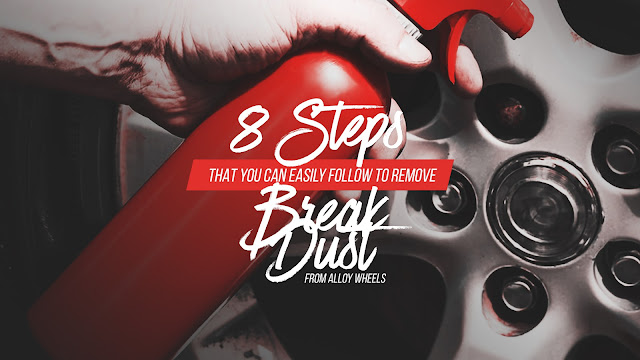Brake dusts accumulate over time. If you don’t want that to start making your car look awful and start causing damages which might require you to visit the car repair shop, it’s best that you try to set aside some time to clean that off. We say set aside because brake dust don’t easily come off with your regular car cleaning agent that you use when washing your vehicle. If you didn’t know that and it surprised you, don’t worry because it’s not exactly rocket-science either. All you have to do is follow these simple steps and you can definitely handle this on your own and at the comfort of your own home or garage.
Step 1: Prepare The Things You’ll Need
You’ll need the following:
· Wheel Cleaner (Specific To Type Of Wheel)
· Clean Towels
· Hose And Nozzle
· Soft Bristle Brushes In Various Sizes
· Wash Glove Or Mitt
· Bucket And Sponge
· Wax
Step 2: Prepare Your Garage Or A Makeshift Roof
Whenever you’re cleaning or doing any kind of grooming on your vehicle, it’s always best to do it in your garage or at least somewhere that’s out from direct sunlight. This way the wheels stay cooler and won't dry before you're done cleaning.
Step 3: Rinse The Wheels
To start off, go get the hose and nozzle to spray rinse the wheel and loosen up any heavy dirt and debris. Doing this prevents those things from scratching the wheels when you start giving it a good scrub.
Step 4: Spray The Brake Dust Cleaner For Rims
Always make sure to use a brake dust cleaner specific to the type of your wheels. Read the instructions on how to use the cleaner and follow them carefully in order to get the best result.
Step 5: Start Gently Scrubbing The Wheel Surface
Once you’ve let the cleaner soak according to instructions, get your soft-bristle brush and or washing glove mitt to start gently scrubbing the wheels’ surface. Try to reach every nooks and crannies of the wheels as you scrub.
Step 6: Rinse The Wheel With Water
When you’re done with that, get the hose again to rinse out the brake dust cleaner along with all the dirt. As you rinse, if you see any spots that you missed simply repeat steps four through six.
Step 7: Don’t Skip Drying
Always towel dry after cleaning to prevent water marks and get a thoroughly cleaned wheels.
Step 8: Apply A Layer Of Vehicle Wax To The Wheel Surface
Once you’re satisfied with the wheel’s appearance, and it’s completely dry, apply a layer of vehicle wax to the wheel surface, following the wax manufacturer’s directions. The wax helps prevent brake dust build up and makes it much easier to remove during future cleanings.
ALSO READ:


